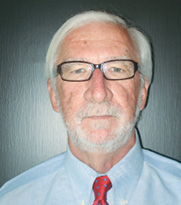After a succession of years where equipment sales continued to increase, not because of dealership marketing efforts or sales force contacts, but rather because of increasing commodity prices and end-user ebullience, many dealership sales forces now find themselves in a sales funk. Regular updates by Farm Equipment continue to provide evidence of declining sales — actual and forecasted — as quarterly results are released by leading manufacturers.
But things are not as bad as they could be. In 2010, while working for a construction equipment manufacturer, sales of major units had declined by 88% from the previous year. Now that is a crisis! So, while a sales decline of 20-30% in the agricultural equipment market is not something to relish, neither is it the time to throw in the towel.
Every year the Baseball Hall of Fame inducts a new member for batting over .300 during his career. This accomplishment does not mean that the individual hit a grand slam every time he stepped up to the plate; nor does it mean that he got a hit every time he batted. Instead, a .300 batting average simply means that he got 3 hits for every 10 times he stepped into the batter’s box. Looking at it through the half empty glass, these hall of famers struck out, grounded out or flew out 7 out of 10 times.
The same is true in any other sport. King James of the Cleveland Cavaliers wants the ball at crunch time. He doesn’t shirk away from the pressure, but rather welcomes the opportunity to take the final shot. He doesn’t waste his time worrying about missing a shot, but instead focuses on winning the game. Winners focus on winning, while losers concentrate on minimizing losses.
As a result of the continual negative publicity affecting the agricultural equipment market, many equipment salespersonnel find themselves afflicted with one of the two sales maladies that impact salespersonnel in declining markets, call reluctance and slumping sales.
Call reluctance is a manifestation of poor habits that redirect the positive energy necessary to successfully fulfill goal-directed behaviors such as prospecting and conquest selling into non-productive behaviors that benefit neither the dealership or the customer, let alone the salesperson themselves.
Call reluctance is the result of numerous factors that can impact the psyche of all but the most positive and energetic salesperson. Some of the factors or conditions that can result in call reluctance include the following:
Laziness: I don’t quite understand why any dealer would retain a lazy individual, but in those cases, the individual has to be challenged physically and intellectually. He should be required to develop a sales quota and a call schedule and be expected to complete a call report and a lost sales report.
Fear of Rejection/Failure: As Jeffrey Gitomer, author and sales consultant has written, “If you’re scared to make sales calls, get out of sales.”
Negativity: Rather than focusing on the reduction of industry sales, positive salespersonnel concentrate on increasing their sales. A 30% reduction in sales translates into 70% of the market still purchasing.
Timidity: Many salespersonnel avoid making sales calls because they don’t want the end-user to see them as “aggressive” or “pushy.” Interestingly, however, is the fact that end-users consistently rate aggressiveness as a trait they look for in a salesperson. History is rife with examples of lost sales because the salesperson either didn’t call on the end-user or lost the transaction because of careless follow-up.
Call reluctance is not a problem, but rather a symptom of a malaise that can be easily corrected by positive thinking and directing one’s behavior toward challenging goals and objectives. The importance of overcoming call reluctance cannot be overstated. As studies have shown, “individuals who have overcome sales call reluctance earn and produce, on average, five times the sales volume and commission dollars of their call-reluctant peers.”
Another malady presently afflicting many salespersonnel are slumping sales, which can occur because of market conditions or poor selling skills. Whatever the reason, corrective action should be initiated sooner rather than later. At a minimum this corrective action should include:
- Objective analysis of sales calls for the past 3 months
- Analysis of past sales records
- Analysis of territory
- Concentration on neglected territory areas
- Updated presentation
- Elimination of negative influences
Whether the issue is call reluctance or slumping sales, salespersonnel have to focus on modifying their behavior to achieve increased sales and higher compensation. There is no better way to start than to follow the advice of John Madden, the Super Bowl winning coach who once said, “When the going gets tough, you don’t quit. And you don’t fold up. And you don’t go in the other direction.” You just keep going.







Post a comment
Report Abusive Comment